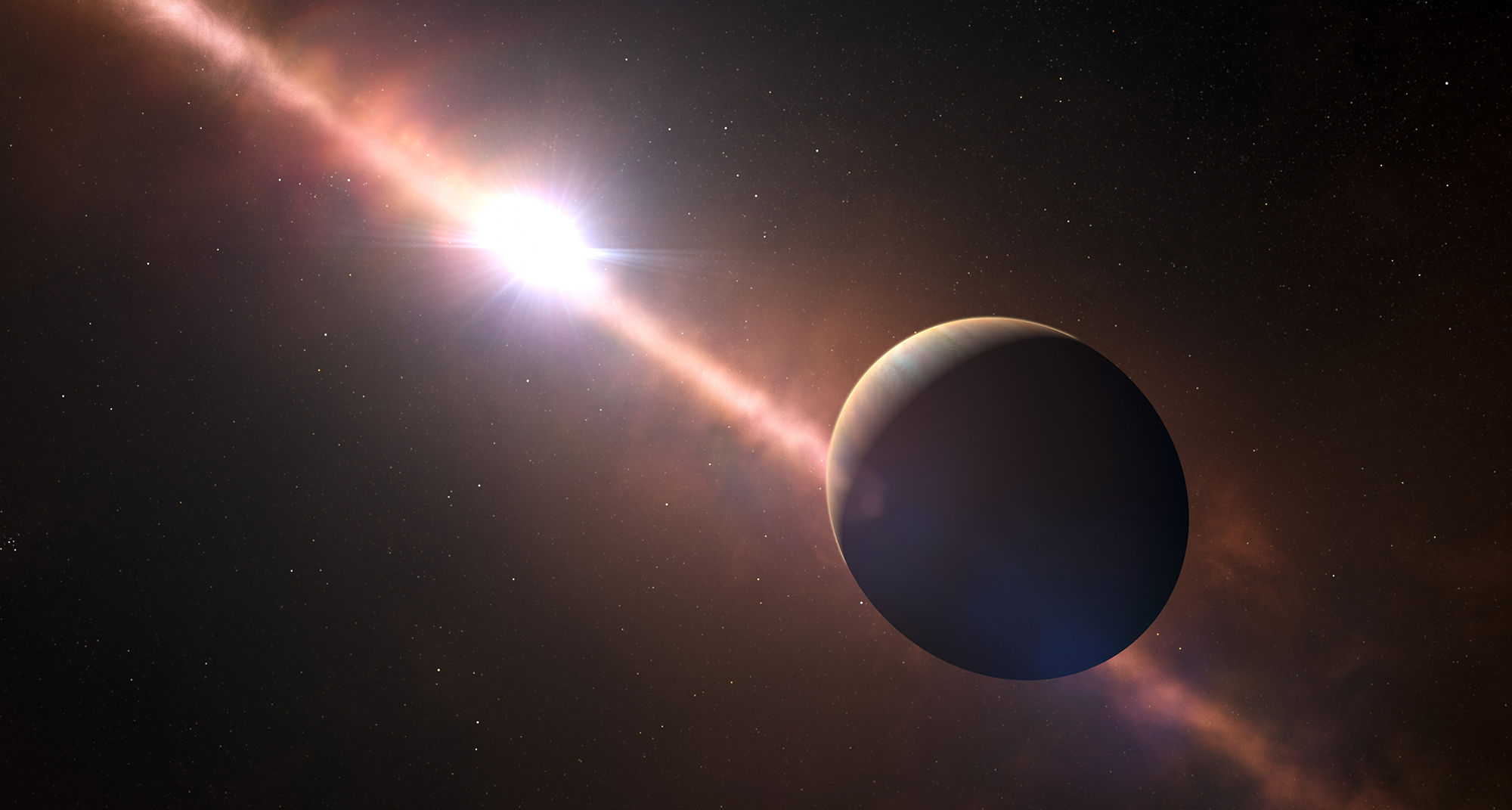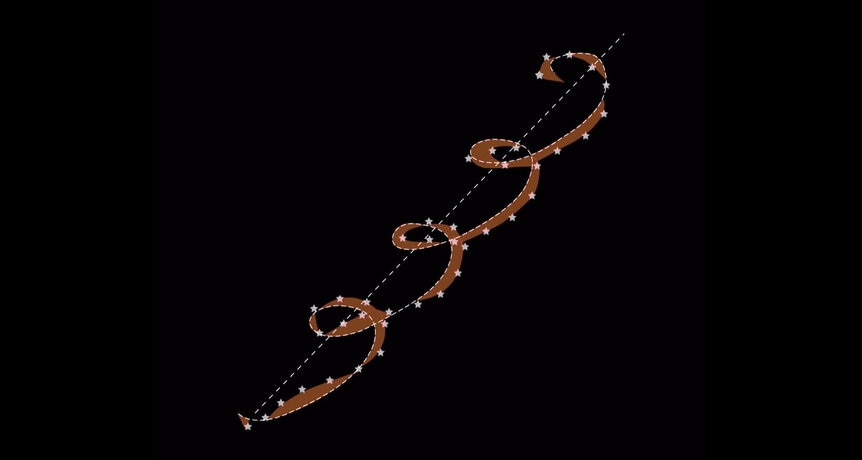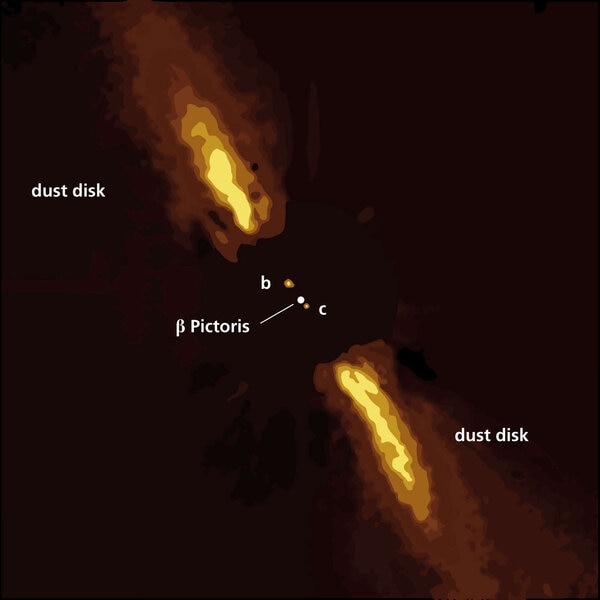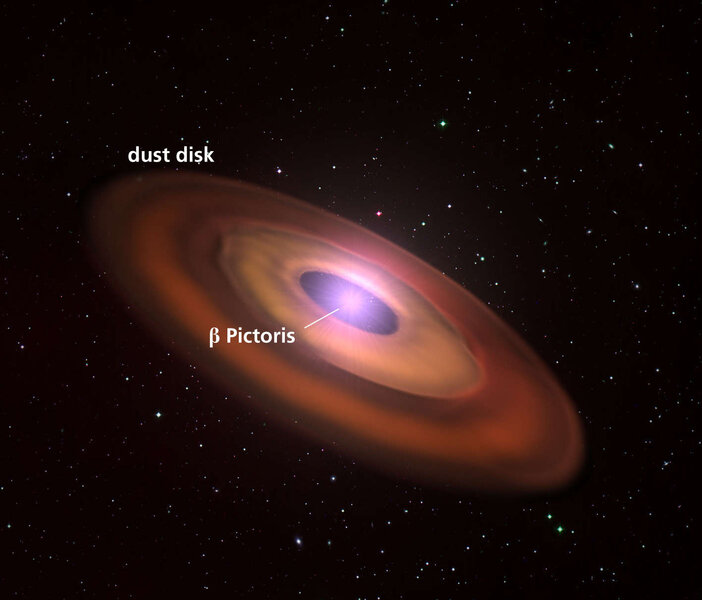Create a free profile to get unlimited access to exclusive videos, sweepstakes, and more!
Astronomers 'find' a second planet orbiting Beta Pictoris due to extremely tiny wiggles by the first planet

Astronomers have done something they’ve never been able to do before: Detect the presence of a second exoplanet around a star by physically and directly measuring the orbit of a first exoplanet via its motion around the star. Basically, the gravity of the second planet yanks on the first, changing its position slightly as it orbits its host star, and that effect is directly measurable.
This is impressive work, and shows just how amazing our techniques are getting for looking at other planetary systems.
The planets orbit the star Beta Pictoris, which is pretty close by, about 63 light years from Earth. It’s near enough to us that it's easily visible to the naked eye from southern latitudes. In the 1980s Beta Pic (as it's nicknamed) was found to have too much infrared light coming from it, indicating it may be orbited by a disk of dust warmed by the star. The disk was then directly seen in images in the '90s, and as time has gone by the observations have only gotten better.
The presence of a planet was inferred from the shape of the disk; the inner edge was warped, indicating a planet orbiting closer in to the star on a slightly tipped orbit. The gravity of the planet was why the disk was bent a bit.
Sure enough in 2008 astronomers announced they had found Beta Pictoris b, a planet with roughly 9 times the mass of Jupiter orbiting the star about 1.5 billion kilometers out — about as far a Saturn does from the Sun. The orbital period (the length of time to orbit once) is 23 years.
The planet was discovered by direct imaging, meaning they literally could see it in images taken of the star! In fact, observations taken over time show the motion of the planet as it orbits the star, nearly edge-on as seen from Earth.
A second planet, Beta Pictoris c, was discovered in 2019. It orbits much closer in to the star (about 400 million km out, the distance of the asteroid belt from the Sun), and is massive enough that as it moves around Beta Pic its gravity pulls the star in a small circle. This reflex motion can be detected via the Doppler shift, though it’s an incredibly difficult measurement. However, a year later Beta Pic c was seen in images taken of the system, confirming its existence. It too is massive, 9 or so times Jupiter’s mass, and has a much shorter orbit of about 3.3 years.
And this is where the new work comes in.
If a planet orbits a star with nothing else near it, the path will make an ellipse. If, however, a second planet is nearby, it will periodically tug on the first planet gravitationally, and the orbit will deviate from an ellipse. In theory, you can take a bunch of observations of the planet, painstakingly measure its position every time, and calculate the orbit for it. If it’s an ellipse, well, you’re done. But if it shows a periodic perturbation, then you’re on to something.
So that’s what a team of astronomers did. They used archived observations of Beta Pic b from the past and added in new observations using the phenomenal GRAVITY instrument on one of the huge 8.2-meter telescopes that make up the Very Large Telescope in Chile. They calculated an orbit for the planet first assuming the planet is the only one orbiting the star, and then also assuming a second planet is out there, and let the calculations determine the best fit for that second planet (in other words what mass and orbit it has to best explain the positions measured for planet b).
And they saw it in their data! They got a mass that's a bit higher than previous measurements, about 10.04 Jupiters, and the uncertainty was large, +4.53/-3.10 Jupiters (so it could be anywhere from about 7 to 14.5 times Jupiter's mass). They weren’t able to restrict its orbit much, but the point is they were able to detect it.
Mind you, we’re talking ridiculously small deviations in a motion that's already ridiculously small in the sky. Imagine you’re in Los Angeles and you roll a marble across your floor. You have a friend in New York City watching with a telescope — the observations of Beta Pic c are like your friend seeing your marble deviate from its path by a centimeter. One centimeter. From a continent away.
But the astronomers could do even better. There are observations of planet c, so adding those in to their orbital calculations improves the accuracy. The mass they got after doing that was 9.15 times Jupiters (±1.08/1.06), which is closer to previous estimates. They also found that the orbital shape was decently elliptical, with an eccentricity of 0.3 (an eccentricity of 0 is a circle, and 1 is a line).
Finally, they also then included the reflex velocity information known for planet c and improved the mass and orbit even further. The got that planet c has a mass of 8.89 ± 0.75 Jupiters, the average orbital axis is 402 million kilometers, and the period is 1221 days. I'll note that within the uncertainty, all these numbers agree with each other, which truly is amazing.
Now, to be fair, Beta Pic c was already known to exist, so they didn't discover it, but that's actually the beauty of this calculation: It can be tested against what we actually know about the planet, so it's not a prediction so much as a confirmation of a new way to find planets. They found it looking only at planet b, but with the prior knowledge of planet c they could refine the numbers significantly.
This new information also may answer a question that has pestered astronomers. Planet b has an eccentric orbit, but it’s not clear why. Did it form that way, or did something mess with it? Planet c has enough mass and is close enough to planet b that they can interact over time, and the inner planet could force the orbit of the outer one into an ellipse. This is by no means proven, but at least it’s possible and consistent with the data. The existence of the planet could also affect material in the disk orbiting the star, adding to the richness of the interactions in this already complicated system.
I was just starting my career (well, undergraduate studies) in astronomy when the disk around Beta Pic was first inferred, and over the years kept an eye on the news about it — in the early 2000s I worked on a camera that took images of it, in fact. I’ve never studied it or worked on the data myself, but watching our understanding of this incredible system grow as my own understanding of astronomy has grown has been a lot of fun.
And we’re nowhere near done studying Beta Pictoris yet. There’s a vast amount left to learn about this nearby complex planetary system.
Tip o' the dew shield to Jason Wang on Twitter who is on the team that did this work.





























